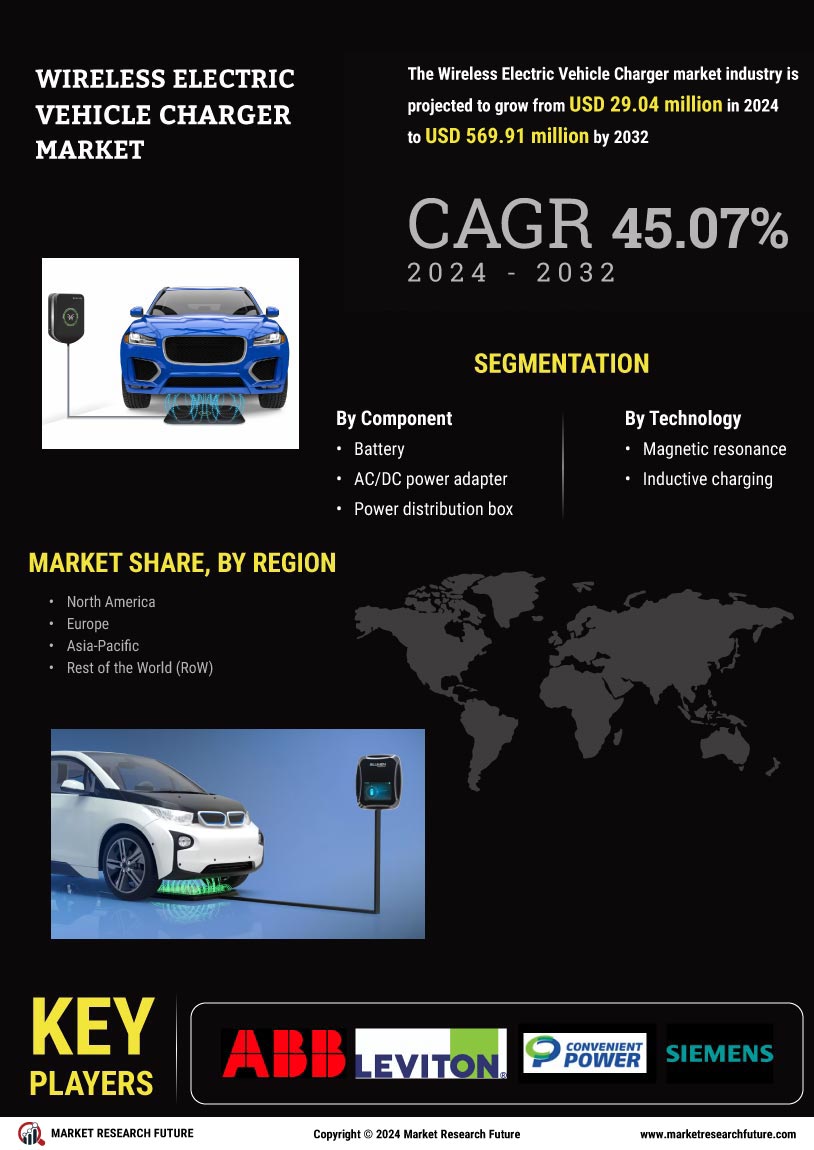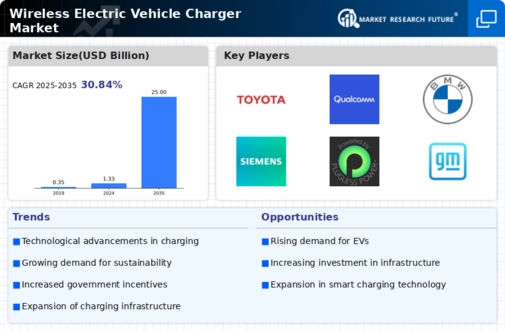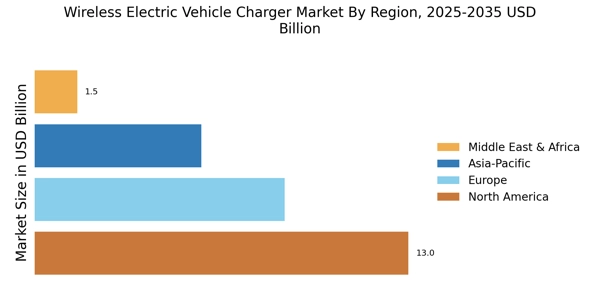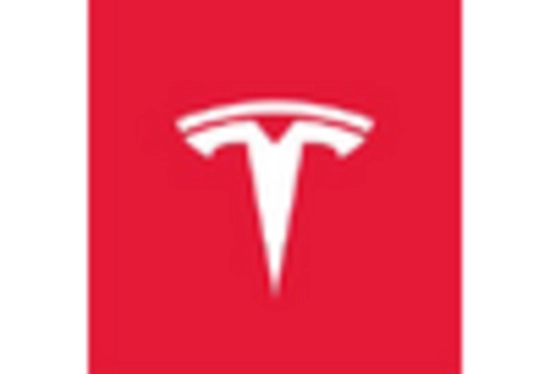The Wireless Electric Vehicle Charger Market is currently characterized by a dynamic competitive landscape, driven by technological advancements and increasing consumer demand for sustainable transportation solutions. Key players such as Qualcomm (US), BMW (DE), and Tesla (US) are at the forefront, each adopting distinct strategies to enhance their market positioning. Qualcomm (US) focuses on innovation in wireless charging technology, aiming to improve efficiency and user experience. Meanwhile, BMW (DE) emphasizes partnerships with technology firms to integrate advanced charging solutions into their electric vehicle (EV) offerings. Tesla (US), known for its aggressive expansion, continues to invest in its proprietary charging infrastructure, thereby reinforcing its market dominance. Collectively, these strategies contribute to a competitive environment that is increasingly centered around technological innovation and strategic collaborations.
In terms of business tactics, companies are localizing manufacturing and optimizing supply chains to enhance operational efficiency. The market structure appears moderately fragmented, with several players vying for market share. However, the influence of major companies like ABB (CH) and Siemens (DE) is notable, as they leverage their extensive experience in electrical engineering to establish a strong foothold in the wireless charging segment. This collective presence of key players shapes the market dynamics, fostering a competitive atmosphere that encourages innovation and collaboration.
In August 2025, ABB (CH) announced a strategic partnership with a leading automotive manufacturer to develop next-generation wireless charging solutions. This collaboration is expected to enhance ABB's technological capabilities and expand its market reach, positioning the company as a leader in the wireless EV charging sector. The strategic importance of this partnership lies in its potential to accelerate the adoption of wireless charging technology, thereby addressing consumer concerns regarding convenience and efficiency.
In September 2025, Tesla (US) unveiled its latest wireless charging station, which incorporates advanced AI algorithms to optimize charging times based on grid demand. This innovation not only enhances user experience but also aligns with Tesla's commitment to sustainability. The introduction of AI-driven solutions signifies a shift towards smarter charging infrastructure, which could set a new standard in the industry and further solidify Tesla's competitive edge.
In October 2025, BMW (DE) launched a pilot program for wireless charging in urban areas, collaborating with local governments to test the feasibility of integrating charging pads into public infrastructure. This initiative reflects BMW's proactive approach to addressing urban mobility challenges and demonstrates its commitment to sustainable transportation solutions. The pilot program is likely to provide valuable insights into consumer behavior and charging patterns, informing future product development.
As of October 2025, the competitive trends in the Wireless Electric Vehicle Charger Market are increasingly defined by digitalization, sustainability, and the integration of AI technologies. Strategic alliances are becoming more prevalent, as companies recognize the need for collaboration to drive innovation and enhance market presence. Looking ahead, competitive differentiation is expected to evolve, with a notable shift from price-based competition to a focus on technological innovation, reliability of supply chains, and the development of sustainable solutions. This transition underscores the importance of adaptability and forward-thinking strategies in navigating the complexities of the evolving market.

















Leave a Comment